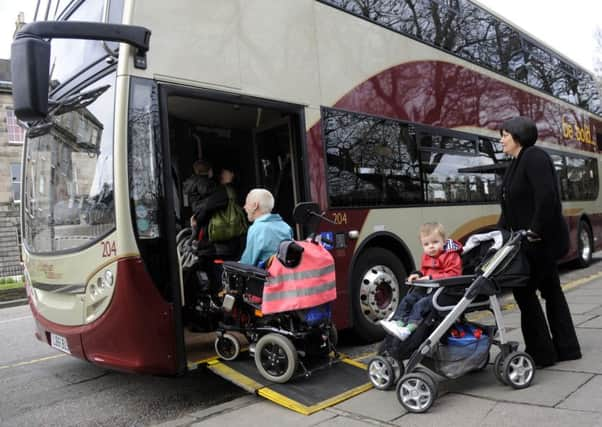Mike Harrison: To get disabled facilities right, try asking the disabled first


Is this just another report that ticks some boxes and then can be filed away and forgotten, or will it be the catalyst the provides the answer to disabled people’s dreams?
In my childhood (70 years ago) you would think disabled people did not exist. In my community I only knew of two: one an elderly man who travelled about the village on an almost Victorian hand-cycle, and the other a young boy who would at the time have been described as “feebleminded”. They were generally hidden away and there was certainly no provision for them to participate in the life of the community. Things began to change with the Disability Discrimination Act (DDA) of 1995 followed by the Equalities Act of 2010.
Advertisement
Hide AdAdvertisement
Hide AdGoing Further has come out of an extensive consultation between disabled people, transport operators and providers and the government and local authorities. It began with a collection of 48 quite specific issues raised by disabled people and the job of the steering group has been to analyse, categorise, refine and evaluate all these points. There was quite a lot of overlap.
Some key points that emerged were: consultation, information and integration.
1. Things are often designed on a “nanny knows best” principle without consultation with those who are actually going to use them. Sometimes there are rules and laws which give specifications which are below the standards which uses need. For example – doors and wheelchairs. If a door, especially to an accessible toilet, does not have a spring it can be difficult for a wheelchair user to close it. On the other hand, if the spring is strong, it can be difficult to hold the door open long enough to get through it. In every aspect of design there is a need for the users to have input from the beginning. This can avoid some very costly retrofitting.
2. One thing that often deters disabled people from travelling is uncertainty. Uncertainty that they can physically managed to get on the bus/boat/plane, that they will get the assistance they need, that they will not find themselves abandoned on a platform or pier. Information in advance and on the journey and in an accessible format is very important. 3. Travel is from door-to-door and will almost always involve more than one mode. It may be simply getting from the front door into a taxi, or getting from the front door to a bus stop; but it may be changing from a bus or train. Integration covers not only ticketing and timetables but also pavements, platforms and passenger assistance.
The Framework takes up these in its high-level plan (which occupies only six pages of the 64 page document) and that is perhaps the most positive thing so far. What is now needed is a plan for action over the next 10 years. The Scottish Accessible Transport Alliance produced an “Accessible Transport Strategy and Action Plan for Scotland” a year ago which identified some 80 specific actions to improve travel for disabled people. This also suggested which body might be responsible for implementation. The Framework recommends how progress should be monitored, but it doesn’t specify what the actions should be, who should implement them or how they should be paid for. Neither does it say how or by whom the next stage should be triggered off.
A certain amount of momentum has been gained in the last 18 months between all the parties involved – the government, local authorities, regional transport partnerships, manufacturers, transport operators and service providers, the disabled and disabled organisations – and it’s important that this momentum and the links between all these people are now developed into specific plans and that responsibility is taken for progressing the high-level action into work on the ground to be completed within the ten-year timespan.
Mike Harrison is secretary of the Scottish Accessible Transport Alliance